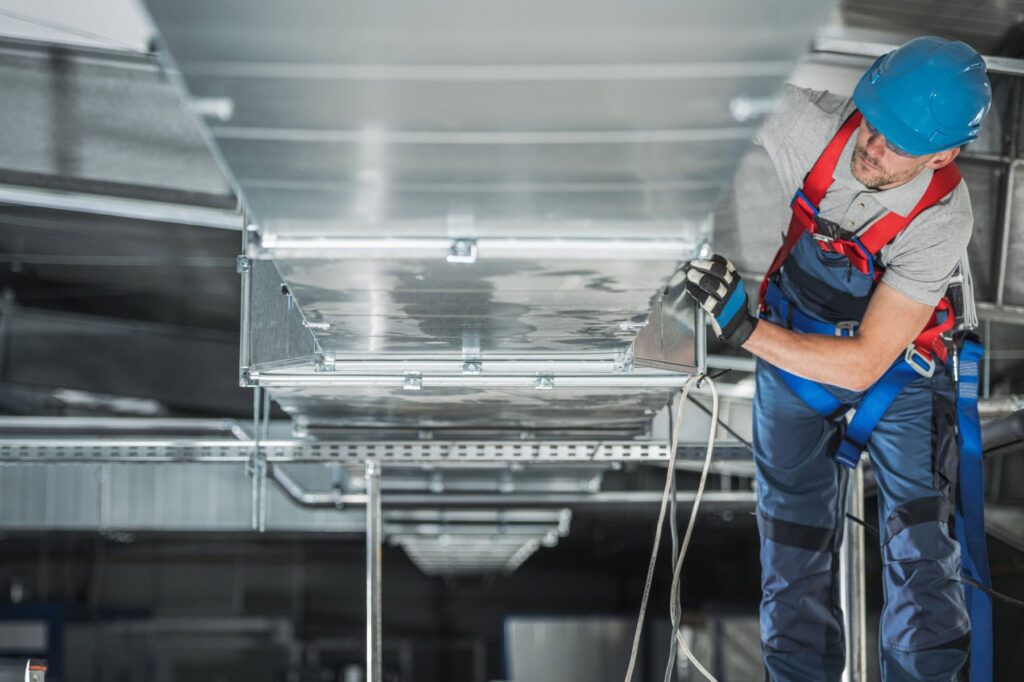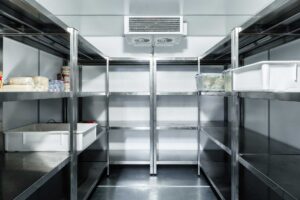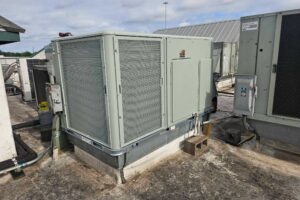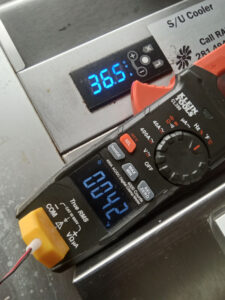Choosing the right size HVAC unit for a commercial space is more than just a comfort decision—it’s a critical business investment. Whether you’re running a restaurant, managing an office, or operating a large retail space, getting the size right ensures energy efficiency, consistent climate control, and cost savings.
Understanding HVAC Tonnage
Before diving into square footage and calculations, it’s important to grasp what HVAC “tonnage” really means.
- 1 BTU (British Thermal Unit): The energy required to raise the temperature of one pound of water by one degree Fahrenheit.
- 1 Ton of Cooling: The capacity to remove 12,000 BTUs of heat per hour—equivalent to melting a ton (2,000 pounds) of ice in 24 hours.
This system allows professionals to translate heat removal into measurable cooling performance. But how does this translate to sizing for a real-world space?
How Much Cooling Power Does a Commercial Space Need?
For commercial spaces, tonnage needs are typically calculated using square footage. However, in restaurants and warehouses, cubic footage becomes relevant due to high ceilings and open layouts.
General Guidelines:
- Restaurants: Require 1 ton for every 133–300 square feet.
- Offices: Typically need 1 ton for every 300-500 square feet.
Restaurants like “The Hungry Ram”, known for their vibrant energy, large crowds, and open architecture, lean toward the lower end of the square-foot-per-ton scale. That’s because kitchens generate excess heat, and packed dining rooms mean more body heat and more cooling demand.
Example: The Hungry Ram
Let’s look at a practical example. “The Hungry Ram” restaurant, designed for a bustling crowd and high-volume service, needs to stay consistently cool—even when the kitchen’s at full heat and the dining room is packed.
- Building Size: 13,000 square feet
- Cooling Requirement: Using the more demanding estimate of 1 ton per 133 sq. ft., the calculation is:
13,000 ÷ 133 = 97.74 tons
Rounded up, this means the restaurant needs a 100-ton HVAC system to maintain comfort during peak hours. Anything less could lead to overheating, unhappy customers, and overworked equipment.
Why Size Matters
An undersized HVAC unit will struggle to maintain the desired temperature, running constantly and raising energy costs. On the other hand, an oversized unit can cool too quickly, resulting in humidity issues and inconsistent air distribution.
That’s why proper HVAC sizing isn’t just about throwing in the biggest unit you can find—it’s about matching the system to your actual needs. Factors like occupancy, ceiling height, equipment heat load, and layout must be considered.
Let RAM Help You Get It Right
At RAM Refrigeration Air Maintenance, we specialize in helping restaurants and commercial clients make informed decisions about HVAC sizing. Whether you’re outfitting a small café or a large chain like “The Hungry Ram”, our team ensures that your system is efficient, powerful, and perfectly suited to your space.
Choosing the right size HVAC unit for a commercial business or restaurant isn’t a one-size-fits-all answer. Contact RAM HVAC & Refrigeration Pro’s today to let us help you find the right fit—because comfort, efficiency, and performance all depend on it.







